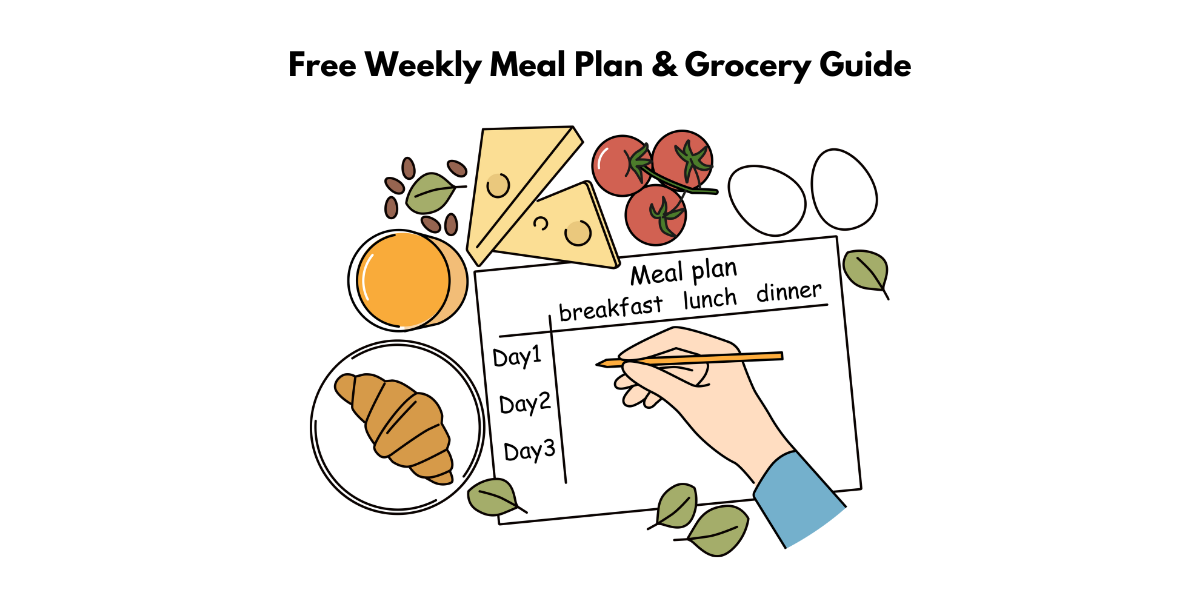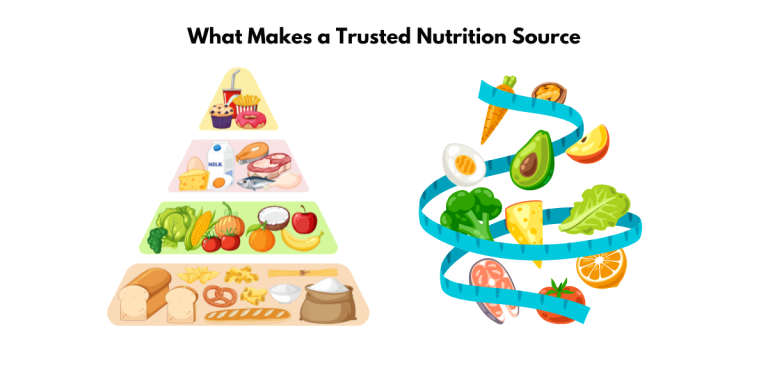Effortless Meal Prep: Your Free Weekly Meal Plan & Grocery Shopping Guide for Stress-Free Cooking
The Importance and Basics of Weekly Meal Planning
Why Weekly Meal Planning Matters
Meal planning can transform your culinary routine by saving time and reducing stress. By organizing meals in advance, you avoid last-minute grocery runs, ensuring you have everything needed for nutritious and delicious dishes. According to nutrition sources, meal planners report saving up to 2 hours per week. Planning also helps cut down on food waste, with households reducing waste by 28% on average.
How to Get Started with Meal Planning
Embarking on meal planning is simpler than you might think. Start by designating a specific day for planning and shopping each week. Begin by assessing what ingredients you already have; this prevents unnecessary purchases. Next, select a few recipes that align with your schedule and preferences. Consider the time required for each dish; this ensures your planning aligns with your daily activities. Use a meal planning app or a printable template to help you organize your recipes and grocery list. As you settle into the routine, explore new recipes to keep meals exciting. Remember, the key is flexibility—be open to adjusting plans as needed.

This Week’s Featured Recipes
Delicious Main Courses
This week’s main courses bring vibrant flavors to your table, making dinner a highlight of your day. Our featured dish, Creamy Garlic Chicken, pairs tender chicken breasts with a luscious garlic sauce that’s irresistibly savory. A classic Beef Stir-Fry offers a quick, healthy option full of colorful vegetables and hearty beef. Don’t miss out on Zesty Lemon Salmon, rich in omega-3s and perfect for any seafood lover. Vegetarian guests will love the hearty Chickpea Curry, an aromatic dish that’s both filling and plant-based. For a pasta twist, try the Spinach Ricotta Stuffed Shells, bringing a comforting Italian flair.

Scrumptious Side Dishes
Elevate your meals with side dishes that add both texture and flavor. This week, Crispy Roasted Brussels Sprouts provide a delightful crunch and nutty taste that complements any main course. For a creamy option, our Garlic Mashed Potatoes are smooth and indulgent, perfect for pairing with hearty meats. Fresh Grilled Asparagus seasoned with lemon and parmesan offers a healthy, vibrant choice. Try the Caprese Salad for a fresh twist, complete with juicy tomatoes, creamy mozzarella, and fragrant basil. Lastly, a Quinoa Pilaf infused with herbs delivers a nutrient-rich accompaniment that’s both satisfying and light.
Tasty Desserts and Snacks
Wrap up your meals with desserts and snacks that promise to satisfy sweet cravings without the guilt. Indulge in the Flourless Chocolate Cake, a rich and fudgy treat that’s surprisingly simple to make. For a fruitier option, our Berry Parfait combines layers of fresh berries with Greek yogurt, offering a refreshing finish. The classic Oatmeal Cookies provide wholesome flavor and are perfect for a quick snack. Try our No-Bake Energy Bites, packed with oats and peanut butter, for a nutritious boost anytime. Finally, the Banana Bread Muffins offer a comforting aroma and delightful taste, ideal for breakfast or snack time.

Organizing Your Grocery List
Must-Have Staples
Stocking your pantry with must-have staples ensures you’re always prepared to whip up a meal. Essential items like oils and vinegars provide the base for salad dressings and cooking. Canned tomatoes and beans are versatile, forming the foundation for sauces, soups, and stews. Grains such as rice, pasta, and quinoa offer multiple meal options, while spices like salt, pepper, garlic powder, and herbs lend flavor to any dish. Don’t forget to include dairy staples such as milk, butter, and cheese, which are key in numerous recipes. Having these on hand saves time and expands your cooking possibilities.
Fresh Produce Picks
Fresh produce injects color, flavor, and vital nutrients into your meals. This week, focus on vibrant vegetables like leafy greens, which are rich in vitamins A, C, and K, perfect for salads and sautés. Carrots and bell peppers add crunch and vivid hues to any dish, while broccoli and cauliflower provide fiber and antioxidants. For fruits, select seasonal options like apples and bananas; they’re versatile snack favorites or perfect additions to desserts. Berries, packed with antioxidants, are excellent for breakfast blends or tasty toppings. Choosing fresh produce in season ensures the best flavor and value.
Protein Essentials
Incorporating a variety of proteins is key to balancing meals. This week, choose lean meats like chicken breast and turkey, which are lower in fat yet high in protein, ideal for a range of dishes. Eggs offer a versatile protein source perfect for breakfast or baking. Don’t overlook seafood—salmon and shrimp are rich in omega-3s and quick to prepare. For plant-based options, stock up on legumes such as chickpeas and lentils; they’re protein-packed and great in soups or salads. Tofu and tempeh serve as excellent meat alternatives, absorbing flavors beautifully. Ensuring a diverse protein selection keeps meals exciting and nutritionally sound.

Tips for Efficient Shopping
Navigating the Aisles Like a Pro
Shopping efficiently starts with understanding the layout of your store. Begin by organizing your list by sections—produce, dairy, meats, and pantry staples—to streamline your trip. Tackle the perimeter first, where fresh items like fruits, vegetables, meats, and dairy products are located. This not only speeds up shopping but also helps focus on nutritious options. Visit the interior aisles for non-perishable items, but stick to your list to avoid impulse buys. Familiarizing yourself with store brands can also yield cost savings without sacrificing quality. Practicing this strategy reduces time spent in-store and minimizes the likelihood of unnecessary purchases.
Time-Saving Shortcuts
Embrace time-saving shortcuts to make your shopping experience more efficient. Consider preparing a master grocery list that includes your family’s frequently purchased items, allowing you to check items off as needed. Pre-shopping research, like reviewing sales flyers or using grocery apps, can help you find deals and adjust your list, saving both time and money. Use services like online grocery ordering or curbside pickup for ultimate convenience, letting you skip in-store browsing. Additionally, buying pre-cut or pre-cooked items such as rotisserie chicken or bagged salad mixes can significantly reduce meal prep times at home, giving you more time for what matters most.
Budget-Friendly Options
Shopping on a budget doesn’t mean compromising quality. Start with planning meals around weekly sales and discounts. Coupons, available online and in-store, can significantly reduce your grocery bill. Choose store brands for many staples; they often offer similar quality to national brands at a lower price. Buy in bulk for cost savings, especially for items with a long shelf life like grains and canned goods. Shop seasonally for fresh produce to ensure you get the best prices and flavors. Finally, keep track of prices to recognize a good deal when you see one, ultimately stretching your grocery dollars further.
Customizing the Meal Plan
Adapting for Dietary Needs
Customizing your meal plan to accommodate dietary needs ensures everyone at the table enjoys their meals. Start by identifying any restrictions or preferences, such as vegetarian, gluten-free, or low-carb diets. To maintain nutritional balance, consider using substitutions like almond flour for gluten-free baking or plant-based proteins such as beans and lentils for meatless meals. Utilize clear labeling on your meal plan and grocery list to avoid accidental inclusion of trigger foods. Research alternative recipes or modify favorites by swapping ingredients to better suit these needs. This tailored approach enhances meal satisfaction and promotes inclusivity at the dining table.
Switching Up Ingredients
Inject creativity into your meal plan by switching up ingredients while maintaining flavor and nutrition. Begin by experimenting with different grains, such as substituting quinoa for rice to add a nutty texture and increase protein intake. Replace chicken with turkey in dishes like stir-fries for a leaner option. Try incorporating a variety of herbs and spices to transform the taste profile of familiar recipes—cumin, coriander, or thyme can work wonders. Swap out vegetables seasonally, using squash in place of zucchini or trying kale instead of spinach for a nutrient boost. By keeping your ingredient choices diverse, meals remain exciting and prevent culinary boredom.
Adding Your Favorite Dishes
Enhancing your meal plan by adding family favorites ensures meals are not only nutritious but also cherished. Start by listing dishes that bring fond memories or are universally loved in your household, whether they’re classic comfort foods or new culinary trends. When incorporating these favorites, consider their nutritional impact and balance them with healthier options. You can also modify recipes slightly to boost their nutrient profile, adding extra vegetables or using whole grains. Planning a specific night for a favorite dish can create anticipation and joy, making mealtimes a special event. This personal touch keeps the meal plan dynamic and family-oriented.

Maximizing Meal Prep
Batch Cooking Techniques
Batch cooking is a time-saving technique that involves preparing large quantities of food in advance, which can be portioned out and stored for future meals. Start by selecting recipes that store well, such as soups, stews, or casseroles. Dedicate a few hours one day a week to batch cook these meals, and use containers to divide portions for easy grabbing. Investing in a slow cooker or Instant Pot can further streamline this process, allowing for hands-off cooking. Label each container with the date and dish name to simplify meal selection throughout the week. Batch cooking not only saves time but also reduces stress, as it minimizes daily meal preparation.
Storing Meals Safely
Ensuring your meals are stored safely is crucial for maintaining their quality and avoiding foodborne illnesses. Begin by cooling cooked foods quickly to prevent bacterial growth; refrigeration should occur within two hours of cooking. Use airtight containers to keep meals fresh and prevent odors from mingling. Divide large dishes into smaller, shallow containers for faster cooling. Always label containers with dates to ensure meals are consumed while fresh, typically within three to four days. For longer storage, consider freezing meals—just be sure to leave space at the top of containers for expansion. Thaw frozen meals safely in the refrigerator overnight to prepare them for reheating.
Creative Leftover Transformations
Transforming leftovers into entirely new dishes not only reduces waste but also enhances your culinary creativity. Start by assessing leftover items and consider how they can be reimagined. Roast chicken can be shredded to create tacos, stirred into soup, or served atop salads. Cooked grains like rice transform into tasty fried rice or can serve as a filling base for casseroles. Turn leftover vegetables into nourishing frittatas or mix them into pasta for added nutrients and flavor. Even mashed potatoes can be repurposed as the topping in a cottage pie or as a base for potato pancakes. The key is to use spices and sauces to reinvent flavors and keep meals fresh and delightful.
Free Weekly Meal Plan

FAQs
How do I determine portion sizes?
To determine portion sizes, consider the dietary needs and activity levels of each individual. General guidelines suggest using a hand guide: a portion of protein the size of your palm, carbs like pasta or grains a fist-size, and a thumb-size portion of fats. Utilizing kitchen scales and measuring cups can offer more precise portions suited to specific diets. Adjust based on personal goals and feedback from family members.
What if I have picky eaters in the family?
For picky eaters, involve them in meal planning to garner interest and willingness to try new dishes. Keep meals familiar with slight variations, like adding favorite ingredients to new recipes. Gradually introduce new foods alongside familiar favorites. Presenting options and encouraging taste tests can also expand their palate over time.
Can I substitute ingredients for allergies or preferences?
Absolutely, ingredient substitution is a practical way to address allergies and preferences. For those with gluten allergies, use almond or coconut flour instead of wheat flour. Replace dairy with plant-based milks like almond or oat milk. Consider lentils or beans as protein substitutes for meat allergies. Always double-check labels and recipes for hidden allergens to ensure safety.




